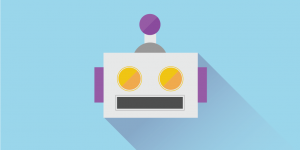Each issue of Consumer Reports magazine includes a page called “Selling It: Goofs, Glitches and Gotchas,” a round–up of advertising, marketing and packaging “bloopers.” Occasionally, they show ads that feature the same models appearing in promotional materials for competing products, such as the same family appearing in ads for both cable and satellite TV services. In one case, the same person appeared in advertisements for a wide variety of medications, suggesting that the poor soul had every ailment under the sun. Finally, he appeared in an ad for a funeral home. He then reappeared, Lazarus–like, some time later in another drug ad.
Are these fickle folks or the medically unfortunate? Probably not, but they do illustrate one of the perils of using royalty–free stock photography, especially that from popular providers: inadvertently having the same images appear repeatedly and occasionally in ads for competing products. You would think that the sheer volume of royalty–free images on the market would keep that from happening, but it’s not always the case.
The market for stock imagery has exploded in the past decade. As the quality, variety, price and ease
of acquisition have all improved, stock (especially the royalty–free variety) has largely displaced custom photo shoots for all but the most deep–pocketed content creators. Recent research by The Industry Measure found that 80% of all graphic design and production establishments use royalty–free stock imagery on a monthly basis. The typical graphic arts firm used an average of 5.6 images per month and spending an average of almost $1,000 per month on royalty–free images.
Many content creators avail themselves of new stock pricing models as a way of controlling the use of the imagery they are paying for. In particular, the past several years have seen the emergence and growing adoption of “rights-managed” images. Under a rights–managed model of stock pricing, the purchaser pays a higher price for an image, but buys the exclusive rights to that image for a specified period of time. (The exact terms vary by stock provider.) The Industry Measure found that 37% of design and production establishments used rights-managed images on a monthly basis. The average monthly rights–managed image use was 4.1 images for a mean monthly spending of $2,400.
Naturally, rights–managed stock imagery isn’t for everyone. Creatives can (and do) customize royalty–free stock to suit their specific purposes by Photoshopping in other elements to give an image a distinctive look. (Some stock photography user agreements prohibit image editing or manipulation, however.) On the other hand, rights–managed images (especially illustrations) tend to be of somewhat higher quality than their royalty–free counterparts.
Stock providers also have other pricing models available, and have imagery that will fit any application or budget.
If you are working on a major regional or national campaign—or a book cover—and need to ensure the exclusivity of your imagery, you might want to consider rights–managed images as opposed to royalty–free images. After all, you don’t want your advertising message to end up on Consumer Reports’ bloopers page.
More Insights To Enjoy:
+ Psychology of Color in Print
+ Psychographics Can Help Your Marketing Communications
Sign up today to receive future issues of our award-winning newsletters to ensure you receive all of Action’s Insights.
© Action Graphics, 2012.




